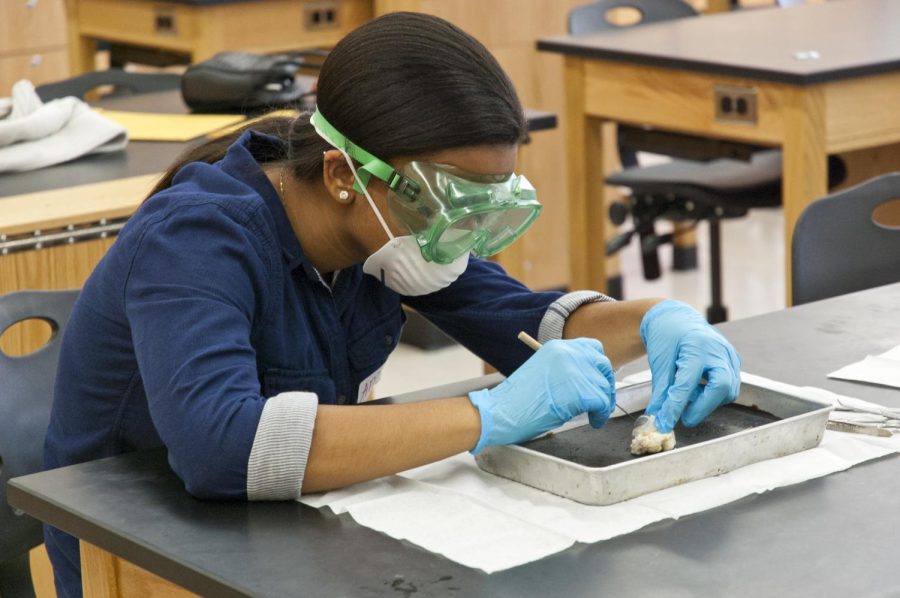Pro: Animal dissections
For Mercy students enrolled in the anatomy and physiology course, these past few weeks have been filled with invaluable hands-on experiences as groups dissect and examine rabbit specimens. While some protest the activity of dissection, many educators and students can agree that there is no substitute for the knowledge gained during the process.
The National Association of Biology Teachers, founded in 1938, encourages schools to allow students to observe and take part in dissections.
“The NABT acknowledges that no alternative can substitute for the actual experience of dissection or other use of animals and urges teachers to be aware of the limitations of alternatives,” states the National Association of Biology Teachers.
Junior Gabby Rapp also says that overall, the dissection activity has greatly contributed to her understanding of anatomy.
“I really do enjoy the dissection because it is hands on learning and helps me understand more of how muscles and tissues are connected and where,” says Rapp. “It can be difficult to learn anatomy with a virtual person on the iPad, so hands-on is very beneficial.”
The Anatomy and Physiology course at Mercy is advertised as a class that is especially important for students interested in entering medical fields. With activities and lab experiences such as dissection, students preparing to enter medical professions have a chance to truly explore the medical sciences and determine if that is the path they want to take. If a student is deprived of the invaluable experience of dissection, she may not gain the necessary knowledge that is required to make informed career decisions.
Junior Jacqueline Hijaouy, another student in the course, states that dissecting has immensely helped her to learn anatomy in a direct way.
“I like dissecting. I think it’s interesting to get to see and feel the organs you learn about in class,” says Hijaouy. “[For] a lot of people, especially visual learners, it helps to see things and touch things in order to remember it. Putting an actual object to the name you’re learning about helps you remember it.”
For students apprehensive about dissection, Hijaouy offers words of advice and encouragement.
“I think for people who are nervous about it, just be open to the idea about dissecting, because it is so interesting and you can learn so much.”

